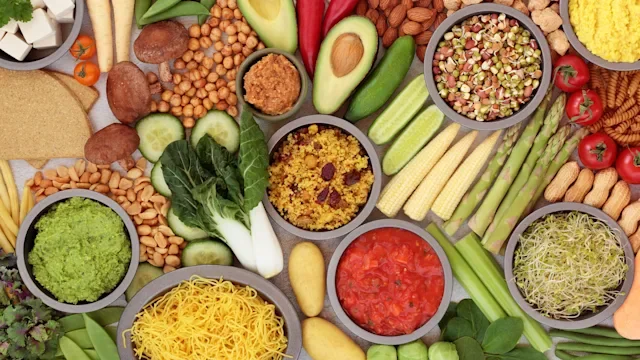Key takeaways:
There are many ways to help fight food insecurity. Examples include working with mutual aid groups, family sponsorship, and even virtual volunteering.
A good place to start is with your local food bank to see where help is needed the most.
Volunteering or donating is an easy way to make a difference in your community.
Food insecurity is a term that describes when people don’t have access to enough food. As of 2020, it was estimated that over 38 million people in the U.S. were food insecure — including around 1 in 7 children.
Food insecurity is a growing problem. And it can result in people having to make difficult decisions when choosing between paying for food and other essentials. Fortunately, there are many ways for you to get involved to help fight food insecurity — beyond your typical food kitchen.
Read on to learn more about what food insecurity is, what causes it, and who is most likely to be affected by it. We’ll also highlight ways you can help make a difference in your community.
What is food insecurity?
Food insecurity is the lack of access to enough food on a consistent basis. It often involves not having enough food for every person within a household.
Food insecurity can prevent someone from being able to live a healthy and active life. What’s more, chronic health conditions can develop when people can’t afford nutritious food. This creates a cycle of diet-related chronic illness.
Some people experience food insecurity temporarily. But it can be a long-term situation for many others.
What are the main causes of food insecurity?
A number of factors can cause food insecurity. But obstacles to accessing enough food are commonly related to:
Income: Income can affect food insecurity if money for food isn’t as readily available.
Employment: Unemployment can affect income, which makes it more difficult to afford food. The COVID-19 pandemic resulted in significantly higher levels of unemployment in 2020. Even while joblessness has improved, low-wage workers are still far from recovery.
Race or ethnicity: Certain races and ethnicities disproportionately experience food insecurity. This may be due to a combination of social and economic factors.
Disability: Disabilities can sometimes limit employment options. They can also cause more financial strain due to added healthcare expenses.
Other drivers of food insecurity can be at the community level. For example, neighborhood conditions and limited transportation can affect access to food.
Read more like this
Explore these related articles, suggested for readers like you.
Which communities are most at risk of food insecurity?
Communities that are disproportionately affected by these factors may be at higher risk.
For example, households with lower income are more likely to experience food insecurity. In fact, over 53% of lower-income households in 2020 were food insecure.
As mentioned above, race and ethnicity can play a role in food insecurity. Black and Hispanic households have higher rates of food insecurity compared to the national average.
Predominantly Black and Hispanic neighborhoods also tend to have fewer supermarkets or grocery stores than other neighborhoods. This can leave them with lower-quality food options from convenience stores. Limited transportation can also limit access to better options.
People with disabilities are also at higher risk of food insecurity. In fact, food insecurity affects 33% of households that have an adult with a disability that aren’t receiving disability benefits.
What are the negative effects of food insecurity?
Food insecurity can impact the health and well-being of everyone experiencing it — no matter their age.
Studies have shown that food insecurity in children can result in a number of health issues. In fact, children with food insecurity are twice as likely to be in poor health compared to other children. What’s more, conditions like anemia and asthma have been linked to food insecurity.
Food insecurity also affects adults. Studies have shown that it’s linked to mental health conditions, including depression. It can also raise the risk of chronic health conditions like high blood pressure, diabetes, and high cholesterol. And once diagnosed, it’s more difficult to follow dietary guidance to keep these conditions under control.
What are some ways to get involved to help fight food insecurity?
You can help make a positive impact on food insecurity within your community. There are many ways to get involved. Let’s review a few examples.
1. Organize or volunteer at a food drive
Schools are an important source of nutritious food for children with food insecurity. Backpack food programs help provide easy-to-prepare nutritious foods when they aren’t at school. This might be over the weekend and on holidays.
You can get involved with a backpack program by donating online, volunteering, or dropping off supplies at a food drive location. Examples of backpack food programs include One More Child, KidsPack, and Feeding America. These programs make take-home bags that give kids access to healthy and nutritious food.
In addition to school meal programs, there are other ways to get involved and help end hunger in your community. Churches, schools, and clinics may offer ways to volunteer at food drives. Plus, you can organize your own.
When organizing a food drive, start by contacting your local food bank to learn how to best support them. You can search for one close to you by visiting Feeding America’s website. You could also choose to run your food drive through a church, school, or homeless shelter.
Next, decide how the food should be collected. This might be through a community event, like a local sports game or fair. Recruit and train volunteers to help set up the collection site. You’ll also need help organizing and coordinating food sorting and delivery.
Get the word out — through word of mouth, social media, or flyers — to help make the event successful.
Click or tap for more information on how to organize a food drive.
2. Volunteer at your local food bank
Although helping a local food bank in person is ideal, you may be looking for alternative options. An easy way to get involved with volunteering at a food bank is through virtual volunteering.
The first step is to contact a local food bank. They may have virtual volunteer opportunities, like helping to raise funds. Food banks might also need help with projects like grant writing, web design, and data entry. You could also organize an online food drive or fundraiser. There’s even an option to raise money by hosting a charity livestream.
There are also more traditional ways of volunteering at a local food bank. For example, you could help stock and organize food items for pickup. If you’re able to drive and have access to a vehicle, you could also help deliver food.
3. Volunteer at Meals on Wheels
About 1 in 4 older adults live alone. This can make it difficult for them to get proper nutrition if they don’t have help from family or friends.
Meals on Wheels is a nationwide service that offers meal delivery and wellness checks. They help older adults (usually age 60 and older) who are living at home alone or need assistance getting nutritious pre-prepared meals.
Volunteering with Meals on Wheels includes picking up warm meals and delivering them to older adults in your area. This is normally done over the lunch hour. You can volunteer as frequently as you’d like, depending on your schedule. You can also ask about other opportunities to volunteer beyond meal delivery.
Click or tap to sign up if you’re interested in volunteering. But if volunteering in person isn’t an option, you can also give a monetary donation.
4. Sponsor a family
Many families need help accessing basic supplies — from groceries to personal care items. Nonprofit programs, such as Family-to-Family, allow you to sponsor a family in need. This ensures that they get enough monthly groceries.
One sponsorship option involves making monthly contributions that provide an average of 15 meals per month. There’s also an option of starting a local chapter to create and send monthly food boxes to families in need. You can also choose to sponsor a refugee family to help get them on their feet. Learn more about sponsorship opportunities.
5. Volunteer with a mutual aid group
Mutual aid groups work to help meet the needs of a community. They bring people in a community together to provide support and build relationships with neighbors. These groups may be created in times of crisis or in preparation for economic or natural disasters.
There are plenty of mutual aid resources available. They make it easy to get involved in fighting hunger and other social issues. Some of these resources include:
Database of Localized Resources During COVID 19 Outbreak provides information on local and national mutual aid programs. Look for local volunteer opportunities, like delivering groceries in your community.
Mutual Aid Hub allows you to search for a mutual aid hub near you. This resource can help you find volunteer opportunities. You can also donate monetary gifts or food items.
Change X offers a step-by-step guide on how to create your own community fridge. Community fridges are a type of mutual aid that involves fridges stocked with fresh food. Neighbors take or leave unopened food as needed.
6. Donate food and supplies
Donating healthy foods and nonperishable items (e.g., canned food) is an easy way to help local families. Start by calling ahead to local food pantries, food banks, and homeless shelters. They can tell you which items are needed the most.
Below are some resources to help you get started:
Find Your Local Food Bank allows you to search for food banks by zip code or state.
AmpleHarvest.org has an interactive map to locate food pantries near you.
Homeless Shelter Directory is a list of homeless shelters and homeless service organizations by state.
The bottom line
Food insecurity is an important issue. And it remains difficult to tackle due to complex underlying causes. But we can all do our part to help make a difference, in our communities and beyond.
Volunteering and donating is a good way to get involved. There are many ways to help, both in person and online. A good place to start is by reaching out to your local food bank to see where help is most needed.
If you or someone you know is in need of food assistance, refer to the USDA National Hunger Hotline: 1-866-3-HUNGRY (1-866-348-6479) or 1-877-8-HAMBRE (1-877-842-6273) for Spanish.

Why trust our experts?



References
AARP. (n.d.). Help feed a family in need.
AARP. (n.d.). Organize a food drive.
Action for Healthy Kids. (n.d.). Backpack programs.
Alexandra Ocasio Cortez Democrat NY-14. (n.d.). Mutual aid 101: Toolkit.
AmpleHarvest.org. (n.d.). Find a pantry to donate food.
Brookings. (2021). The pandemic hurt low-wage workers the most — and so far, the recovery has helped them the least.
Center on Budget and Policy Priorities. (2022). Tracking the COVID-19 economy's effects on food, housing, and employment hardships.
Change X. (n.d). 5 step guide to community fridge.
Coleman-Jensen, A., et al. (2014). Household food security in the United States in 2013. U.S. Department of Agriculture.
Coleman-Jensen, A., et al. (2016). Household food security in the United States in 2016. U.S. Department of Agriculture.
Coleman-Jensen, A., et al. (2021). Household food security in the United States in 2020. U.S. Department of Agriculture.
Economic Research Service. (2009). Access to affordable and nutritious food: Measuring and understanding food deserts and their consequences. U.S. Department of Agriculture.
Eicher-Miller, H., et al. (2009). Food insecurity is associated with iron deficiency anemia in US adolescents. The American Journal of Clinical Nutrition.
Family to Family. (n.d.). Feed a hungry family.
Family to Family. (n.d.). One-to-one.
Family to Family. (n.d.). Sponsor a refugee family.
Feeding America. (n.d.). BackPack program.
Feeding America. (n.d.). Charity stream on Twitch and YouTube.
Feeding America. (n.d.). Feeding America.
Feeding America. (n.d.). Find your local food bank.
Feeding America. (n.d.). Start a fundraiser for Feeding America.
Feeding America. (n.d.). What it's like to volunteer at a food bank.
Feeding America. (2021). How to become a virtual food bank volunteer.
Feeding America. (2021). The impact of the coronavirus on food insecurity in 2020 and 2021.
Gundersen, C., et al. (2015). Food insecurity and health outcomes. Health Affairs.
Guthrie, J. (2021). USDA school meals support food security and good nutrition. U.S. Department of Agriculture.
Health and Hunger. (n.d.). Causes and consequences of food insecurity. Feeding America.
Healthy People. (2022). Food insecurity. Office of Disease Prevention and Health Promotion.
Homeless Shelters Directory. (n.d.). Homeless shelters.
Hunger Free America. (n.d.). USDA national hunger hotline.
kidsPACK, Inc. (n.d.). Contact us.
Kirkpatrick, S. I., et al. (2010). Child hunger and long-term adverse consequences for health. JAMA Pediatrics.
Meals on Wheels America. (n.d.). America, let's do lunch.
Meals on Wheels America. (n.d.). America’s seniors need you.
Meals on Wheels America. (n.d.). Find meals.
Meals on Wheels America. (n.d.). Frequently asked questions.
Meals on Wheels America. (n.d.). National office.
Meals on Wheels America. (n.d.). The issue.
Mutual Aid Hub. (n.d.). Mutual aid hub.
Mutual Aid Hub. (n.d.). Mutual aid resources.
One More Child. (n.d.). Food and supplies.
Seligman, H. K., et al. (2009). Food insecurity is associated with chronic disease among low-income NHANES participants. The Journal of Nutrition.
Swenor, B. K., et al. (2021). Food insecurity in the disability community: Disparities in SNAP access. Health Affairs.















